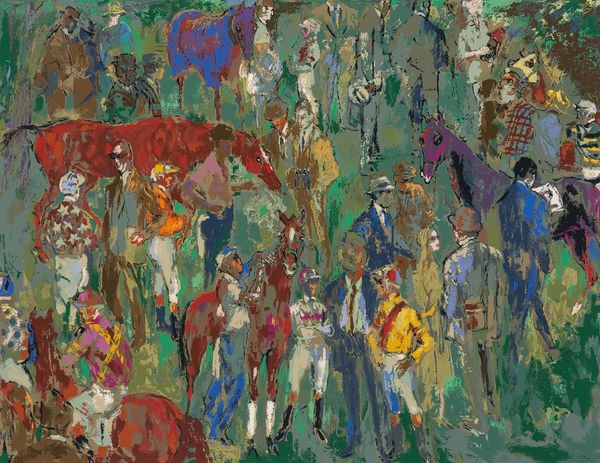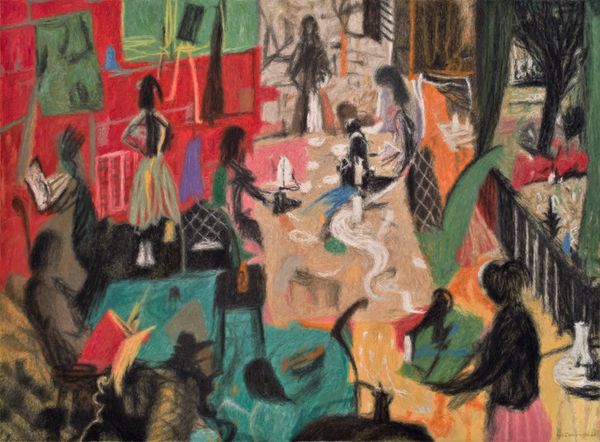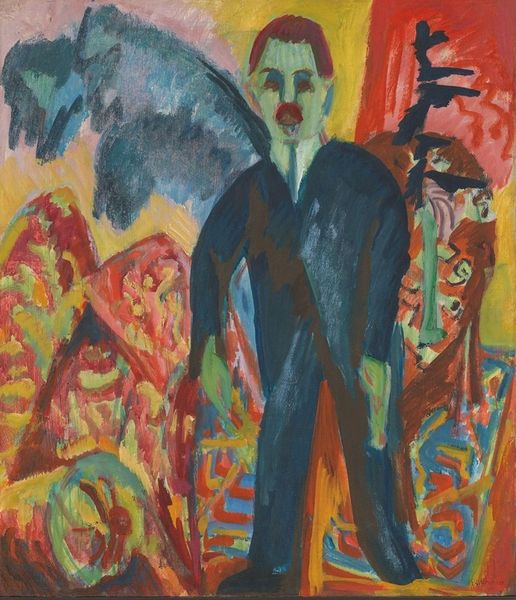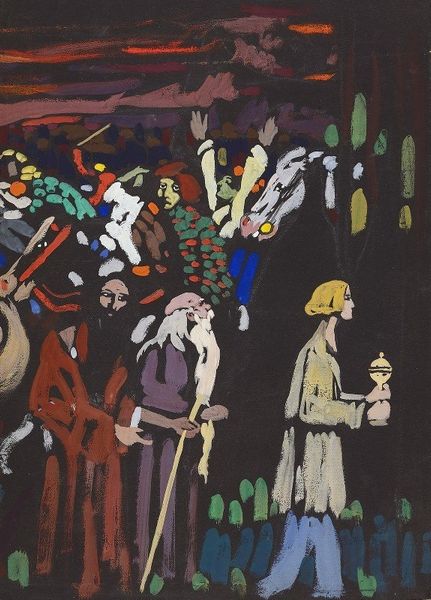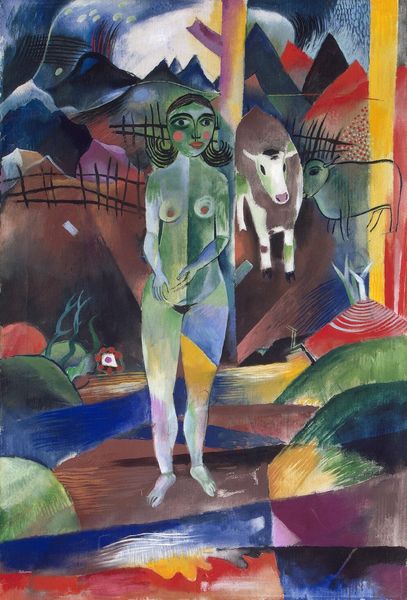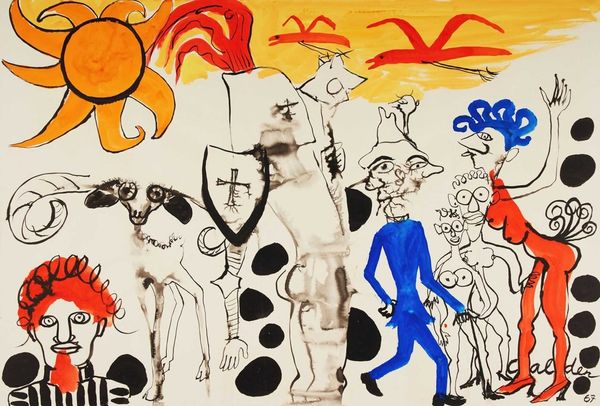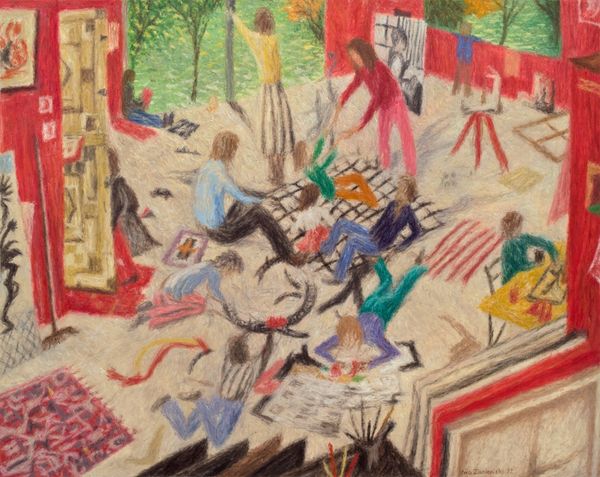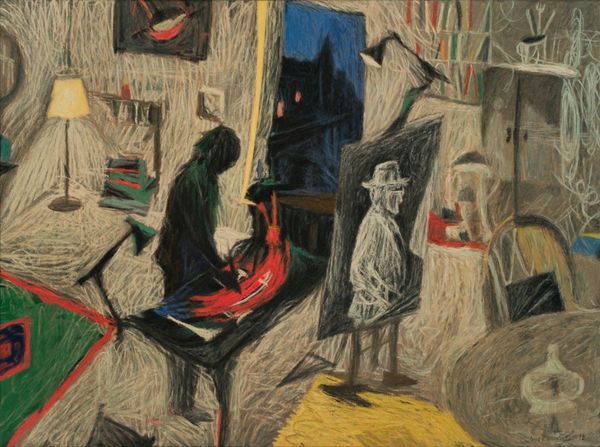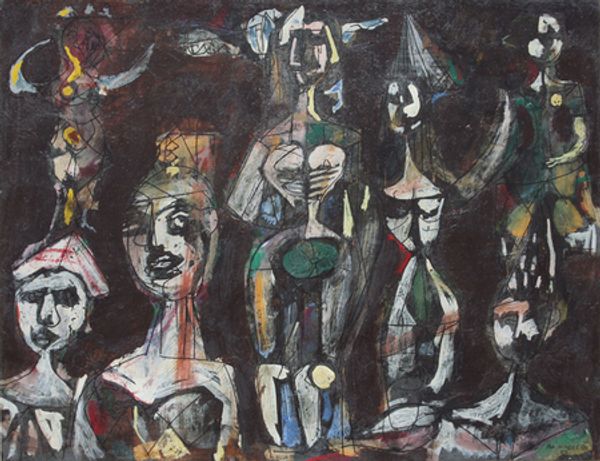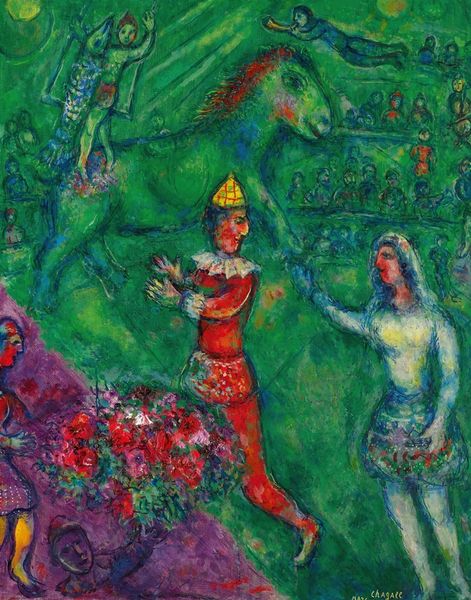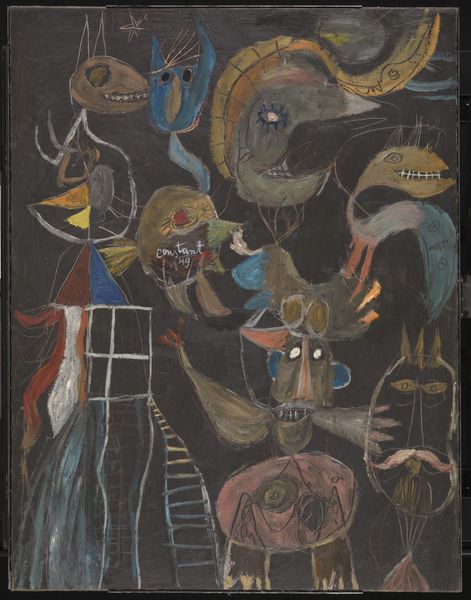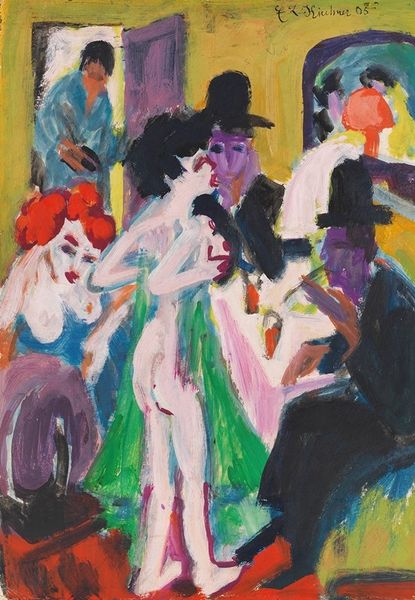
Dimensions: 63.5 cm (height) x 57.9 cm (width) (Netto), 71.7 cm (height) x 65.3 cm (width) (Brutto)
Editor: This is John Christensen's "Gadebillede," created in 1932, using pastel on paper. The circus scene definitely evokes a feeling of unease. It’s far from the joyful spectacle I usually associate with circuses. What do you make of it? Curator: That’s a crucial starting point. Consider the historical context: 1932. The shadow of the Great Depression looms large, and the rise of fascism is creating widespread anxiety. The distorted figures, the melancholic clown, and the chaotic composition all speak to a world teetering on the edge. Editor: So, you see this painting as a reflection of societal anxieties? Curator: Precisely. Christensen uses the circus, traditionally a space of escapism, to mirror the instability of the era. The clown, instead of being a source of laughter, becomes a symbol of vulnerability, perhaps even a critique of those in power who mask the suffering of the masses. The other performers look trapped, confined in this performance of normalcy, if you can call it that. How does the application of pastel work, specifically, underscore this unease? Editor: It feels almost like a sketch, unfinished and raw. It doesn’t have the polished finish you might expect. Curator: Exactly! That immediacy enhances the sense of urgency and disquiet. It’s as if Christensen is compelled to capture the anxieties of the moment before they overwhelm him. What happens when we also view the sexualised nature of some of the performers, next to animal cruelty and melancholic expressions, through the lens of contemporary intersectional theories of oppression? How do these symbols converge? Editor: It’s forcing us to recognise that these types of expressions don’t stand in isolation of each other, but are a larger problem. Seeing it in a single frame brings awareness to this pattern of inequality. I didn't even notice these details until you prompted me. Curator: It's about deconstructing the image to reveal the underlying social commentary. Art can hold a mirror up to power structures. Now, knowing all this, how would you describe the overall mood? Editor: I'd say it's a powerful expression of a society in crisis, using the circus as a stage to expose underlying vulnerabilities.
Comments
No comments
Be the first to comment and join the conversation on the ultimate creative platform.
